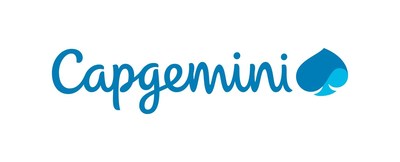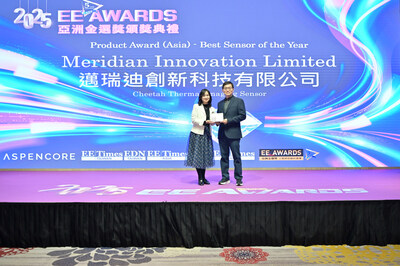Cloud automation boosts revenue and profitability for three quarters of Fast Mover firms
Press Releases
May 04, 2018
NEW YORK, May 4, 2018 /PRNewswire/ — Companies using cloud technologies to automate their legacy applications and IT operations[2] processes are gaining a significant competitive advantage over those behind the curve: among Fast Movers, 75 percent have seen an increase in revenue and profitability while 80 percent of firms say their organization’s agility has improved. This is according to a new report from Capgemini and Sogeti which launched today. “The automation advantage: Making legacy IT keep pace with the cloud,” surveyed 415 IT executives at organizations with large legacy[3] estates across eight countries, to explore the benefits of applying cloud automation[4] to their IT operations processes.

Cloud automation bolsters business innovation
The use of cloud technologies to automate legacy applications and IT operations is resulting in business benefits beyond the bottom-line of revenue and profitability. Fast Movers deploy code twice as often as the Followers. An even more select five percent of Fast Movers deploy code continuously. Capgemini’s 2017 research report, “Cloud Native Comes of Age,” showed the proportion of new enterprise applications that are cloud native will more than double by 2020 in a bid to improve agility. However, today’s report goes further, highlighting that cloud automation is driving acceleration and agility.
Furthermore, fast moving firms see cloud automation as more than a cost-cutting or efficiency exercise; 75 percent of Fast Movers have attempted to use cloud automation to innovate their business models. More than eight in 10 firms report that their customer experience has benefitted as a result.
Jonathan Miranda, Manager at Cisco IT Infrastructure Group, said, “We’re already seeing the rewards from our provisioning at Cisco being almost completely automated. The next step is to transition our systems from being automated to being intelligent. This means that, instead of having users provision with the click of a button, as is the case today, the applications will themselves start thinking about when they need capacity and when to pull the triggers. A combination of artificial intelligence (AI) and technologies such as containerization creates these capabilities.”
Surviving the skills shortage
With 70 percent of executives identifying an absence of skills as a major challenge, companies need to be able to deploy the talent they have on the tasks with the highest business value. Using cloud technologies to automate legacy applications and IT operations is facilitating this, giving time back to highly skilled engineers to work on projects which boost the bottom line: 59 percent of fast moving firms have re-deployed engineers onto higher-value activities such as new development. Eliminating monotonous tasks has been a priority for Fast Movers, with 73 percent of application testing processes in these organizations now automated, nearly four times that of Followers. With this new-found flexibility, firms are starting to upgrade the skills of their existing staff in line with their DevOps strategies – benefitting management practices.
Cloud automation challenges
Despite clear bottom-line benefits, firms are holding back from using cloud technologies to automate legacy IT operations due to reservations over cybersecurity. Security (27 percent) and data privacy (19 percent) concerns are cited by firms as the toughest obstacles in the move to automation of IT operations processes, a trend seen across both Fast Movers and Followers. With GDPR coming into force on May 25 this issue has come into focus, with IT leaders now facing considerable pressure from CEOs and boards to ensure that technology initiatives do not create new data breach risks. However, with cloud providers being increasingly diligent and utilizing security as code processes, the move to automation can mean tighter security, not less.
Jonathan Miranda at Cisco continues, “As we release a lot more of our automation to production, there’s a checklist that our engineers need to check off in terms of their security. It is paramount. It needs to become part of the culture itself as we continue to develop.”
Overcoming obstacles
To catch up with the Fast Movers included in the research, Followers have work to do if they are to remain competitive. The report sets out practical steps for Followers who are looking to embrace cloud automation and enterprise DevOps, including defining the automation strategy to meet business objectives, and building the governance model, processes and culture for DevOps.
Franck Greverie, Leader of Cloud and Cybersecurity, Capgemini Group said, “In an era of continuous technological disruption, enterprise IT departments everywhere are striving to make their business more competitive. The success of Fast Movers highlighted in this report shows what is possible for firms with large legacy estates who are committed to automation. Not only does using the technology enable an organization to be more agile, it also frees up skilled employees’ precious time to focus on higher value tasks such as innovative projects and deployments. Firms that embrace the technology now stand to gain a great competitive advantage.”
For more information on today’s news, or to download a copy of the report, click here.
Research Methodology
The analysis in this report is based on an online survey of 415 IT executives, conducted in October 2017 by Capgemini, Sogeti and Longitude.
Just over one-third of the respondents (34 percent) hold C-suite positions, and 66 percent are management-level IT employees. All respondents work in organizations earning $500M or more in annual revenue, and mainly in the financial services, consumer products, retail and distribution (CPRD), and power and utilities sectors. Eight countries are represented in the survey sample: Australia, France, Germany, India, the Netherlands, Singapore, the UK and the U.S., with 40 percent of the respondents from the U.S., 40 percent from Europe, and 20 percent from Asia-Pacific.
To complement the survey, in-depth interviews were conducted with executives at influential First Movers: Securitas, Husqvarna, HashiCorp, Cisco IT Infrastructure Group, Octo Telematics, Poste Italiane, CA-SILCA and Danieli.
About Capgemini
A global leader in consulting, technology services and digital transformation, Capgemini is at the forefront of innovation to address the entire breadth of clients’ opportunities in the evolving world of cloud, digital and platforms. Building on its strong 50-year heritage and deep industry-specific expertise, Capgemini enables organizations to realize their business ambitions through an array of services from strategy to operations. Capgemini is driven by the conviction that the business value of technology comes from and through people. It is a multicultural company of 200,000 team members in over 40 countries. The Group reported 2017 global revenues of EUR 12.8 billion.
Visit us at www.capgemini.com. People matter, results count.
About Sogeti
Sogeti is a leading provider of technology and engineering services. Sogeti delivers solutions that enable digital transformation and offers cutting-edge expertise in Cloud, Cybersecurity, Digital Manufacturing, Digital Assurance & Testing, and emerging technologies. Sogeti combines agility and speed of implementation with strong technology supplier partnerships, world class methodologies and its global delivery model, Rightshore®. Sogeti brings together more than 25,000 professionals in 15 countries, based in over 100 locations in Europe, USA and India. Sogeti is a wholly-owned subsidiary of Capgemini SE, listed on the Paris Stock Exchange.
Visit us at www.sogeti.com
Rightshore® is a trademark belonging to Capgemini.
[1] “Fast Movers” are the 20% of those surveyed who are the most advanced in applying automation. “Followers” are those at earlier stages of automation maturity.
[2] The term “IT Operations” denotes infrastructure provisioning, configuration management, application testing, and application release.
[3] For the purposes of this study, the term “legacy” denotes applications and application infrastructure that organizations maintain on premise, and not in the cloud.
[4] Cloud automation is delivered using cloud-based tools, but applies to legacy and cloud-native applications, and can be executed in any cloud environment.
![]() View original content with multimedia:http://www.prnewswire.com/news-releases/cloud-automation-boosts-revenue-and-profitability-for-three-quarters-of-fast-mover-firms-300642385.html
View original content with multimedia:http://www.prnewswire.com/news-releases/cloud-automation-boosts-revenue-and-profitability-for-three-quarters-of-fast-mover-firms-300642385.html
SOURCE Capgemini


